| |
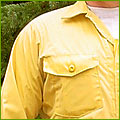
|
|
Fire shirt
A wildland firefighter's standard-issue fire shirt is made of
fire-resistant Nomex material and is always bright yellow for easy
visibility.
back to top
|
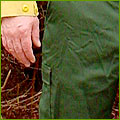
|
|
Fire pants
Fire pants are made of high-strength, flame-resistant, synthetic
Nomex material. Beneath their fire pants and fire shirts, wildland firefighters
must wear 100% cotton undergarments. Synthetic materials such as nylon and rayon
will adhere to the skin in extreme heat.
back to top
|
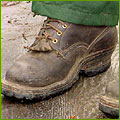
|
|
Boots
Eight-inch, lug-soled leather boots provide firefighters with ankle
support, traction, and foot protection.
back to top
|
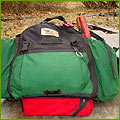
|
|
Line pack
A wildland firefighter's line pack, worn on the back, contains all
of his or her gear in various compartments, including:
back to top
|
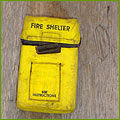
|
|
Fire Shelter
Many firefighters who have deployed fire shelters in emergency
situations say they would not have survived without them. Made of fiberglass
and aluminum, the shelter is a lightweight pup tent enclosed in a small pouch
that wildland firefighters can use as a last-resort cocoon in a
life-threatening predicament. The fire shelter reflects radiant heat, reducing a
deadly 1,000-degree fire to a survivable 120 degrees, and provides a temporary
pocket of breathable air in a fire-entrapment situation.
back to top
|

|
|
Water bottle
Extreme temperatures and physical exertion can quickly lead to
dehydration. Wildland firefighters must carry plenty of water.
back to top
|
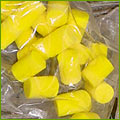
|
|
Earplugs
Earplugs provide protection from loud sounds (such as water
pumps, chain saws, helicopters, and bulldozers), debris, and dirt as fires rage
around them.
back to top
|
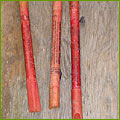
|
|
Flares
Wildland firefighters use flares to light backfires and prescribed
burns. Also known as backfiring fuses, their flares are specially made to work in all weather conditions and
ignite on a delayed fuse to prevent injuries.
back to top
|
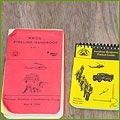
|
|
Handbooks
Containing at-a-glance information on protocols,
techniques, and safety measures, wildland firefighting manuals are an important
reference tool to have on hand.
back to top
|

|
|
Map and compass
Before a wildland firefighter can set out into the
backcountry, he or she must know where the fire is, how to get to it, and how
to get away from it. A marked map of the region and a compass are
essential.
back to top
|
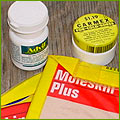
|
|
First aid
Basic first aid supplies, such as lip protection, moleskin for
blistered feet, and pain medication for a pounding head are useful, if not
essential.
back to top
|
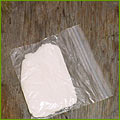
|
|
Toilet paper
Paul and Tess both carry a supply of toilet paper in their
packs.
back to top
|

|
|
Snacks
To keep their energy level high, firefighters keep a selection of
snacks handy.
back to top
|

|
|
Flagging
Wildland firefighters use brightly colored tape to mark routes or
work areas.
back to top
|
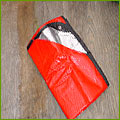
|
|
Space blanket
Waterproof and windproof, a thermal space blanket keeps a
firefighter warm and dry. Space blankets can be used as an impromptu shelter
in poor weather conditions.
back to top
|
|
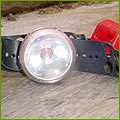
|
|
Head lamp
When it gets dark in the woods, a head lamp lights a firefighter's
way.
back to top
|
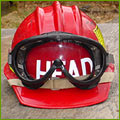
|
|
Helmet
A wildland firefighter's helmet is similar to a construction worker's
hardhat. It is made of durable fiberglass in a bright color and protects the
head from sparks and falling debris, which can cause impact and puncture
injuries.
back to top
|

|
|
Goggles
Goggles protect a firefighter's eyes from heat, smoke, and debris.
Designed to be stowed on his or her helmet, wildland firefighting goggles are
anti-fog, have a hard-coated outer lens, and can sustain five minutes at
500°F, according to National Fire Protection Agency specifications.
back to top
|
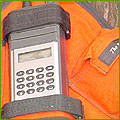
|
|
Radio
Communication is crucial in wildland firefighting. A radio strapped to
the firefighter's chest allows him or her to hear weather reports and fire-plan
updates and to communicate with headquarters and other crews.
back to top
|
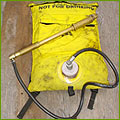
|
|
Bladder bag
Also called a backpack pump, a bladder bag is a collapsible
pack made of neoprene or high-strength nylon fabric and fitted with a
hand-pumped sprayer. Wildland firefighters carry bags filled with up to five
gallons of water, which can be sprayed on the fuel at the base of flames in
order to cool it before digging.
back to top
|
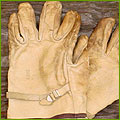
|
|
Gloves
Leather gloves protect a firefighter's hands.
back to top
|
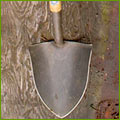
|
|
Shovel
Wildland firefighters carry a shovel, useful for digging, scraping,
and spreading loose dirt over small flames.
back to top
|
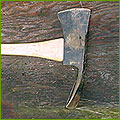
|
|
Pulaski
Named after Edward Pulaski, the Forest Service District Ranger who
invented it after fighting the great fires of 1910, the Pulaski is a chopping
and trenching tool that combines an axe blade with a narrow, adze-like
blade.
back to top
|
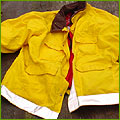
|
|
Brush coat
Made from cotton and fire-resistant Nomex, a firefighter's coat
provides protection from flames and visibility with bright color and relective
stripes. Brush coats are not always practical in high temperatures;
firefighters usually wear them on night shifts and during brisk dawn line
briefings.
back to top
|

|
|
Chain saw
When trees need to be felled or moved out of the way, firefighters
use a chain saw. To safeguard against injury, thick synthetic-material chaps
(seen above in green) are worn while operating a chain saw.
back to top
|
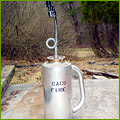
|
|
Drip torch
Firefighters use this small, handheld fuel tank with a handle,
nozzle, and igniter to drip a burning mixture of diesel fuel and gasoline on
materials to be burned. Drip torches are also known as backfire pots.
back to top
|
The Producer's Story |
The World on Fire |
Outfitting Wildland Firefighters
How Plants Use Fire |
Glossary of Fire Terms |
Wildfire Simulator |
On Fire
Resources |
Transcript |
Site Map |
Fire Wars Home
Search |
Site Map |
Previously Featured |
Schedule |
Feedback |
Teachers |
Shop
Join Us/E-Mail |
About NOVA |
Editor's Picks |
Watch NOVAs Online |
To Print
PBS Online |
NOVA Online |
WGBH
© | Updated June 2002
|
|



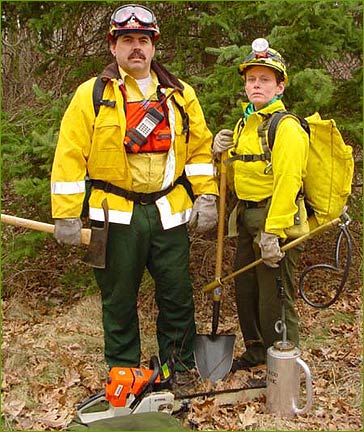 Outfitting Wildland Firefighters
Outfitting Wildland Firefighters